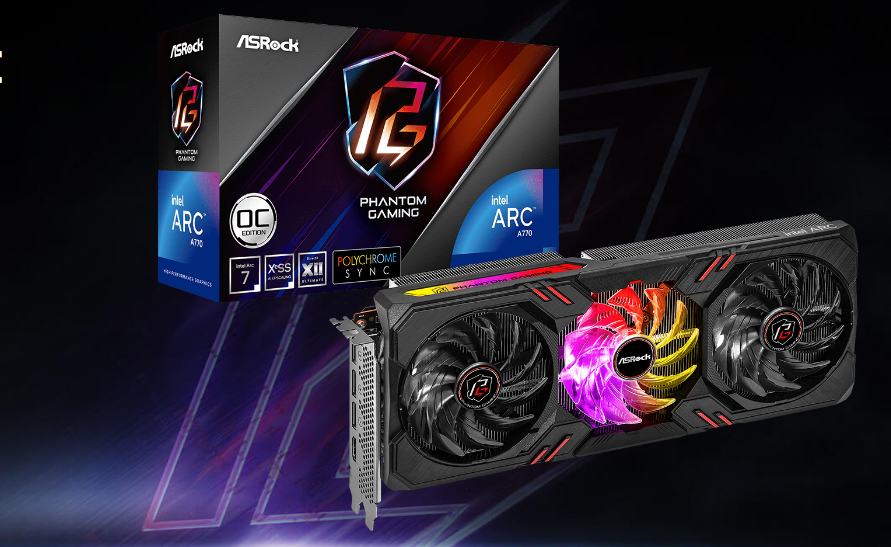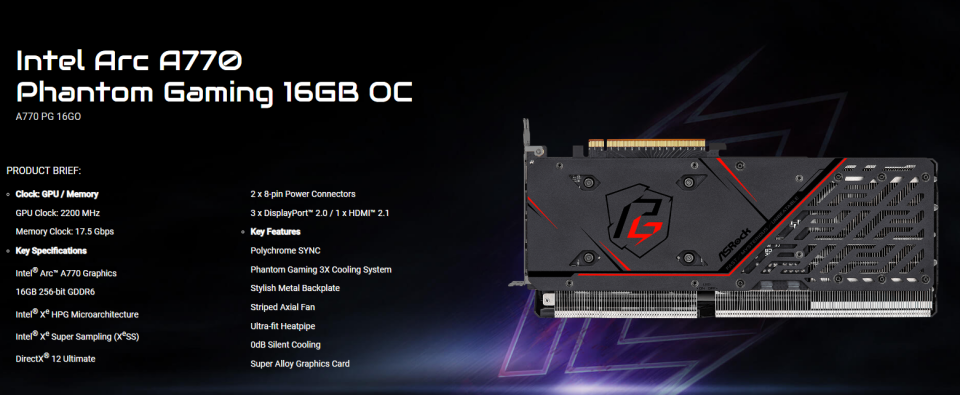ASRock's 16GB Arc A770 Phantom Gaming GPU is Real

It seems that the Newegg-leaked, ASRock-made 16GB version of Intel's Arc 770 graphics card is on the verge of materializing, following a listing on ASRock's own website. The main point here is that there are few Arc A770 GPUs that actually sport the full memory buffer, especially since Intel discontinued its reference, Limited Edition Arc A770. Now, ASRock has confirmed that it is indeed launching a 16GB Arc under its "Phantom Gaming" marketing brand.
There's little to differentiate the 16GB ARC A770 from the 8GB version of the same card, as you might expect. The difference lies mostly in the memory chips used, which are now double the density (compared to the more common 8GB models) and offer slightly faster speeds. That said, any performance improvement from the additional memory throughput will be hard to detect, as the difference between both densities is small (17.5 Gbps on the 16GB model against the 16 Gbps on the 8GB one).

If you're interested in grabbing your own Intel ARC GPU (it's a piece of GPU history, after all), Newegg expects the card to hit shelves by July 28th. At a $329 listing price, the 16GB ASRock ARC A770 Phantom Gaming comes in at the same launch price as the 8GB version of the card. Considering the slump in PC hardware sales and the need for Intel and its partners to clear ARC inventory well before Battlemage (Intel's upcoming, revised discrete GPU design) hits shelves by 2024.
Don't expect Intel's ARC A770 to be the best graphics card you can buy for your money, however, as the performance crown still belongs to Nvidia's RTX 4090. But not everyone is looking for a halo product, and Intel's desktop GPUs have gotten some very impressive performance increases since their original launch. With the additional "savings" from the $329 pricing for this new, expanded-VRAM version, the performance/cost equation for Intel improves even further in the face of competition. And did we mention Intel also has its own great upscaling tech in XeSS?

